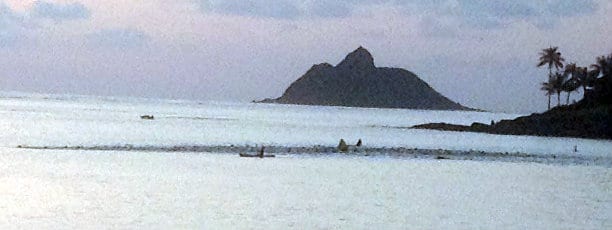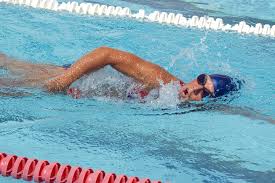Triathlon Swim – How Does a Pool Swim Differ from Open Water?

A surprising number of triathletes indicate that their greatest concern or weakest leg of the triathlon is swimming. The ‘concern’ element typically decreases quickly or even disappears with training, experience and confidence.
This article reviews the main features of pool and open water triathlon swimming. The characteristics of each should be factored into your training.
For sprint or shorter distance triathlons, the swim portion can occur either in a pool or in open water (lake, ocean, river). For longer distance races, the swim will take place in open water. Read here for typical swim distances for the various types of triathlon.
Pool swim
In the pool swim, there are generally two types of swim often dictated by the size (number of lanes) of the pool:
(1) down and back within your assigned lane the number of times required to cover the swim distance and
(2) following a Z-pattern; or swimming down on one lane, going under the lane divider into the adjacent lane, swimming back in the second lane, again going under the lane divider, swimming down the third lane, and repeating the cycle until the number of lanes is completed.
The latter approach is typically used with larger pools.

Pool swims may involve swimming the entire distance in a single lane or changing lanes at the end of each length of the pool.
Swimmers are started at a periodic interval such as every five seconds. When you line up for the swim, you will typically be asked to line up with swimmers whose pace (time per length) is similar to yours. For these races, you will typically be asked to provide an estimated time to complete the swim. You can measure this during training rather than guessing on race day. There is little more frustrating for you or other competitors to have someone clearly swimming at a different pace than others. You are either blocked by other swimmers or you block them.
5 Common Mistakes in the Pool Swim of a Triathlon
Open water
Open water swims are considerably different than pool swims. The main reasons for this difference are:
- With open water swims, there are no lane markers or lane lines to guide you in a straight line. Buoys along a section of the course (sometimes) and at turn locations are the main references for the course. Therefore, an important skill for open water swimming is ‘sighting’. Sighting is the process of periodically checking your position relative to the target points (e.g. the next buoy) and correcting your trajectory.

Open water swims often involve tens to hundreds of triathletes swimming around a series of buoys that define the swim course. Note the Yellow buoy in the upper right and red and white buoys in the lower left.
- You will be swimming close to a greater number of swimmers. Open water swims typically involve tens of swimmers starting at the same moment. Once started, not all of them will swim in a straight line or in the same straight line as you.
- Open water can be much deeper than a pool. The fact that you cannot simply stand-up or grab a wall or lane divider if you become tired or panicked can be a source of anxiety for swimmers who already lack confidence.
- Open water often contains ‘stuff’ that makes some swimmers uncomfortable – vegetation, sticks, rocky or slippery bottoms, and algae, for example.
The main initial goals of your swim training are to:
(1) develop enough endurance to complete the distance of the longest race in which you will compete and
(2) develop confidence to handle the unknowns and ‘chaos’ that can occur in a triathlon.
Having confidence is as or more important than being fast.
How do you achieve these goals? Read here for comments from a senior triathlete and Masters Swim Coach.
